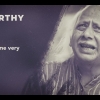Tsilie Sakhrie, Advisor, Khonoma Nature Conservation & Tragopan Sanctuary (KNCTS) Trust is narrating the tales of some legendary mythical heroes of Khonoma village.
(The village) Khonoma has some important sons who (were supposed to have) lived long ago. (Let me mention) a few of those people. I can say Krase was a very important warrior from the Zeliang tribe. There was another important warrior whose name was Kediou. Kediou who was considered to be the chief of the Zeliang area. And Krase might not be considered a chief because in Khonoma we don’t have chiefs but whoever did courageous acts were exalted, you see. And Krase was one of them, you see.
He was a very brave warrior. When he heard about Kediou, the Zeliang chief, he went there and had a duel fight with Kediou and he cut the head of Kediou. Coming back towards Khonoma with the head—carrying the head on his back in a sort of carrying cloth. But while he came to the top of the mountain, you can see this mountain, you see. We were told that there is a plant that we call elixir in English, I think. Elixir plant is available on the very top of that mountain. So when Krase came back with the head on his back, it accidentally touched the elixir plant and it came to life and bit the rib portion of Krase. And he could not remove himself, so he took out his machete, and cut off all the teeth, and then that head of Kediou rolled down on that very mountain. So even today, the name of the mountain is called Kediou tze kerar. Tze means head, kerar means rolling down. So even today the name of that mountain is Kediou tze kerar – the head of Kediou who was falling down. This is the story.
Another story is that of an expert hunter. Instead of living in the village, he (lived in the jungle) trapping birds and wild cats, and killing them with this bow, (it was) before the guns were invented you see. He killed wild animals and birds and different kinds of cats, you see, living in a very big cave in the jungle, you see. During those days, one night, you see, a snake came and bit him. He died of that snake bite, you see. Today that cave is called after his name Dihozhu. His name is Diho. So sometimes the khels put on their best ceremonial dresses and go to see this cave. In the last ten-fifteen years, only one generation went to see this cave dressed in their traditional attire. Diho is the name of the hunter who died in that cave, you see.













